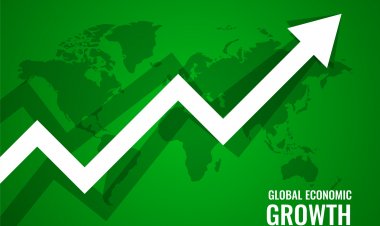Steady Growth Ahead: Saudi Arabian Automotive Engine Oil Market to Exceed $1.1 Billion by 2030
Saudi Arabian automotive engine oil market, valued at USD 955.6 million in 2024, is projected to reach USD 1,118.0 million by 2030, advancing at a steady compound annual growth rate (CAGR) of 2.6% during this six-year period.

In a nation synonymous with oil production, the market for automotive engine lubricants represents an intriguing segment of Saudi Arabia's evolving relationship with petroleum products. Recent market analysis reveals solid growth prospects in this essential automotive aftermarket category: the Saudi Arabian automotive engine oil market, valued at USD 955.6 million in 2024, is projected to reach USD 1,118.0 million by 2030, advancing at a steady compound annual growth rate (CAGR) of 2.6% during this six-year period.
The Current Landscape
The nearly $1 billion valuation in 2024 reflects Saudi Arabia's position as the largest automotive market in the Gulf Cooperation Council (GCC) region, with a vehicle parc of approximately 8 million passenger and commercial vehicles. The Kingdom's harsh climate conditions—characterized by extreme heat, dust, and occasional sandstorms—create particularly demanding operating environments for engine lubricants, driving demand for high-quality products designed for these challenging conditions.
Today's market features a blend of international oil majors with established regional presence, national distributors with extensive retail networks, and emerging local players seeking to capitalize on the Kingdom's push for greater economic diversification and localization of manufacturing. Products range from conventional mineral-based oils to premium full synthetic formulations, with distribution spanning modern hypermarkets, dedicated auto parts retailers, service centers, and the growing e-commerce channel.
Driving Forces Behind 2.6% Annual Growth
Several key factors are propelling the projected growth through 2030:
Expanding vehicle fleet: Despite recent economic challenges, Saudi Arabia continues to see net growth in its vehicle population, with each new vehicle representing years of future lubricant consumption as part of regular maintenance cycles.
Shifting product mix: Consumer education and dealer recommendations are gradually shifting the market toward higher-margin synthetic and semi-synthetic products, driving value growth that outpaces volume expansion.
Extended oil change intervals: While modern vehicles require less frequent oil changes, this trend is offset by the requirement for higher-performance lubricants that command premium pricing.
Infrastructure development: Saudi Arabia's significant investments in transportation infrastructure, including highways, logistics networks, and public transportation, are creating additional demand for commercial vehicle lubricants.
Vision 2030 implementation: The Kingdom's ambitious economic transformation program includes initiatives to increase women's workforce participation and tourism development, both of which are expected to increase personal vehicle usage.
The Path to $1.1+ Billion
The journey to 2030's projected $1,118.0 million market will likely feature several significant developments:
Localization initiatives: In line with Saudi Vision 2030 objectives, more blending and packaging operations will be established within the Kingdom, potentially altering competitive dynamics and distribution patterns.
Environmental regulations: As Saudi Arabia adopts stricter emissions standards for vehicles, demand will increase for lower-viscosity, fuel-efficient lubricants compatible with modern engine technologies.
Digital transformation: The lubricant supply chain will see greater integration of digital technologies for inventory management, predictive maintenance scheduling, and direct-to-consumer marketing.
Service model evolution: Quick lube centers and professional service networks will continue expanding their share of the distribution landscape, influencing brand selection and promoting premium product adoption.
Regional trade integration: Enhanced trade agreements within the GCC may reshape competitive dynamics, potentially allowing greater regional specialization in lubricant production and distribution.
Challenges and Opportunities
Despite the positive outlook, the industry faces headwinds including fluctuating base oil prices, counterfeit products in certain market segments, and the gradual long-term transition toward electric vehicles (though this will impact Saudi Arabia later than many other markets).
For participants in this market, opportunities exist in developing products specifically formulated for the Kingdom's extreme climate conditions, creating robust service networks that combine product sales with maintenance expertise, and leveraging digital channels to educate consumers about the importance of using appropriate lubricants for their vehicles.
Conclusion
The projected growth from $955.6 million to $1,118.0 million reflects both the essential nature of engine lubricants in vehicle maintenance and the gradual evolution of Saudi Arabia's automotive aftermarket. While the 2.6% CAGR may appear modest compared to some emerging technology sectors, it represents healthy expansion in a mature product category within a market that continues to develop and modernize.
For industry participants, success will depend on balancing product innovation with distribution excellence, navigating the Kingdom's economic transformation initiatives, and positioning their offerings appropriately as consumer preferences evolve. As Saudi Arabia continues its journey toward a more diversified economy, the automotive lubricants market will remain an essential component of the transportation ecosystem that enables this broader transformation.


 PramodKr
PramodKr 
























